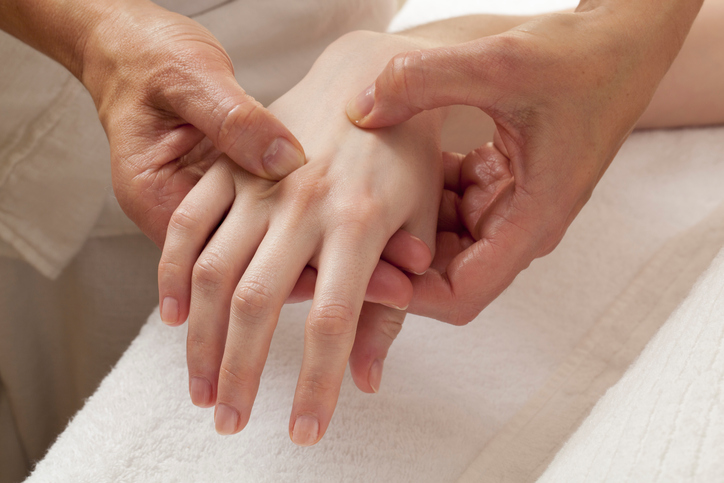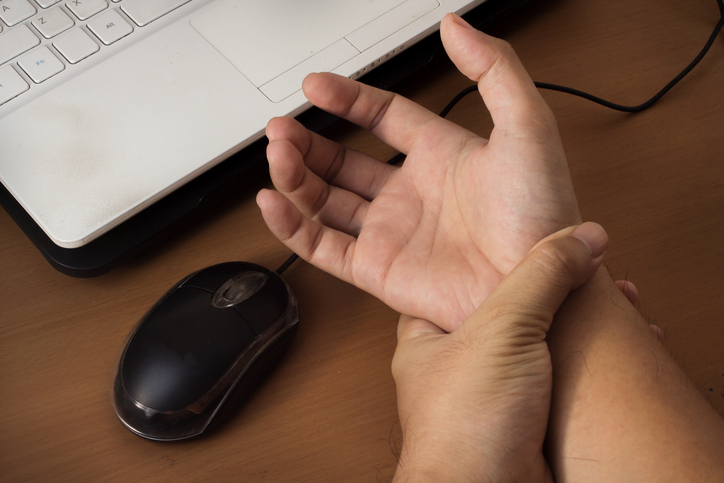Carpal tunnel syndrome occurs when pressure is applied to the median nerve, which controls the movement and feeling in the first three fingers and thumb. The median nerve runs from the forearm to the hand via a small area called – as you may have guessed – the carpal tunnel.
The aforementioned pressure is often caused by swelling, which is triggered by repetitive hand movements, as well as diseases and conditions like hypothyroidism, rheumatoid arthritis and diabetes. Many pregnant women also suffer from carpal tunnel syndrome.

What are the Symptoms?
The symptoms of carpal tunnel syndrome include tingling, weakness, numbness and pain in the hand or fingers, although some people can experience discomfort or pain in their wrist and forearm up to their elbow. Often, symptoms are initially detected or seem to get more noticeable and worse at night.

What Treatment Methods are Available?
If the carpal tunnel syndrome is mild, then it can often be treated at home by icing the affected area (10-15 minutes, 1-2 times an hour), and wearing a splint at night. NSAIDs can help reduce swelling and pain. And of course, reducing or eliminating the activities that cause pain, weakness, tingling and/or numbness is necessary. If the problem persists or gets worse, then surgery may be required, but often this is not required.
Stretches to Treat or Prevent Carpal Tunnel Syndrom
If you suffer from carpal tunnel syndrome, or you want to be proactive and lower your risk, then here are four stretches that can help:
- Vigorously shake your hands, as if you were trying to air dry them after washing. This helps relax your median nerve and flexor muscles. Repeat this for one minute every hour.
- Do some wrist flexes by following these steps: extend one arm at shoulder height, lock your elbow, and place your palm facing downwards. Then, take your other arm, and with the fingers spread out gently push down on the extended hand. Hold this for about 20 seconds, and then release.
- Extend both of your arms in front of your body at shoulder height, and turn your palms outward. Hold this position for about five seconds, and then relax your hands in a flat position. Repeat three times.
- Extend both of your arms in front of your body, and turn your hands into fists with your palms facing downward. Lower your knuckles, and keep your wrists high (as if you’re clutching the handlebars of a bike). Create the deepest stretch that you feel comfortable with for about six seconds, and then return your fists and wrists to the same straight angle. Repeat five times.
Get Advice and Answers
Carpal tunnel syndrome is common, and is even more prevalent than reported numbers since many people suffer from an undiagnosed case. If you’re concerned about pain, weakness, tingling and/or numbness in your hand, fingers or forearm, then contact an orthopedic surgeon for the advice you need. Before long, you’ll be back on the path to better health!



